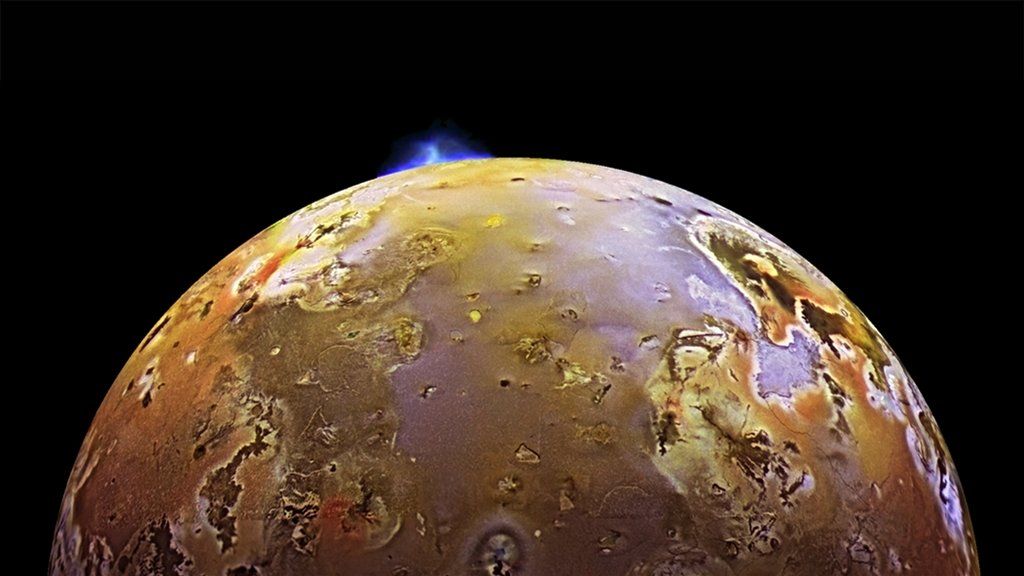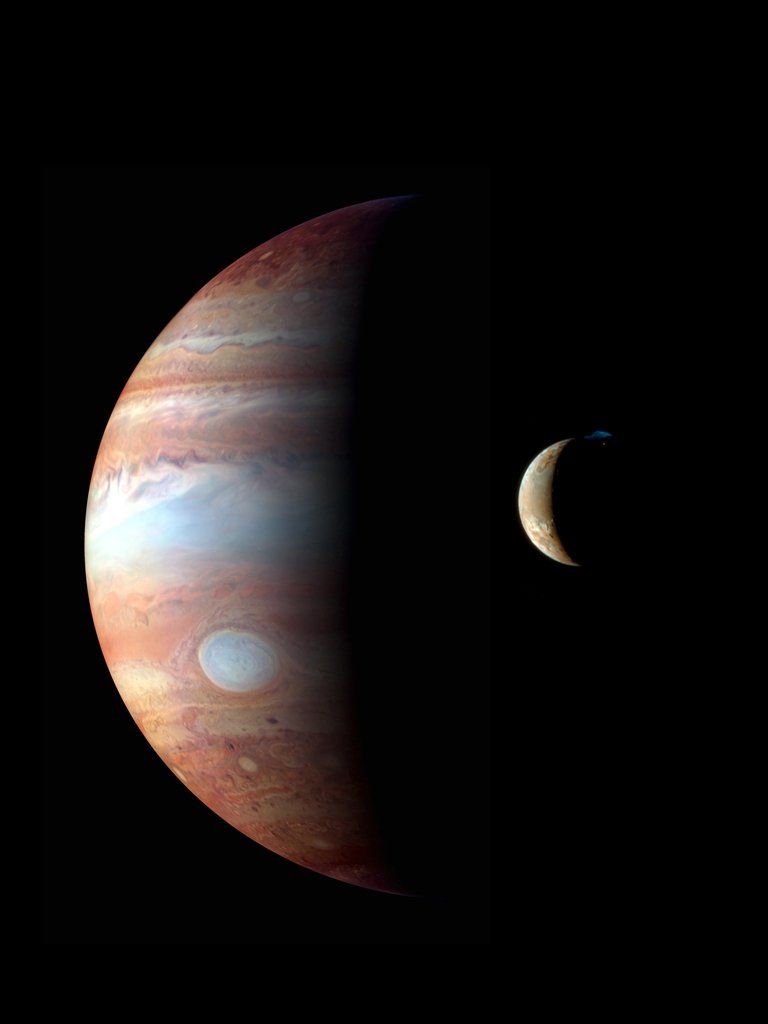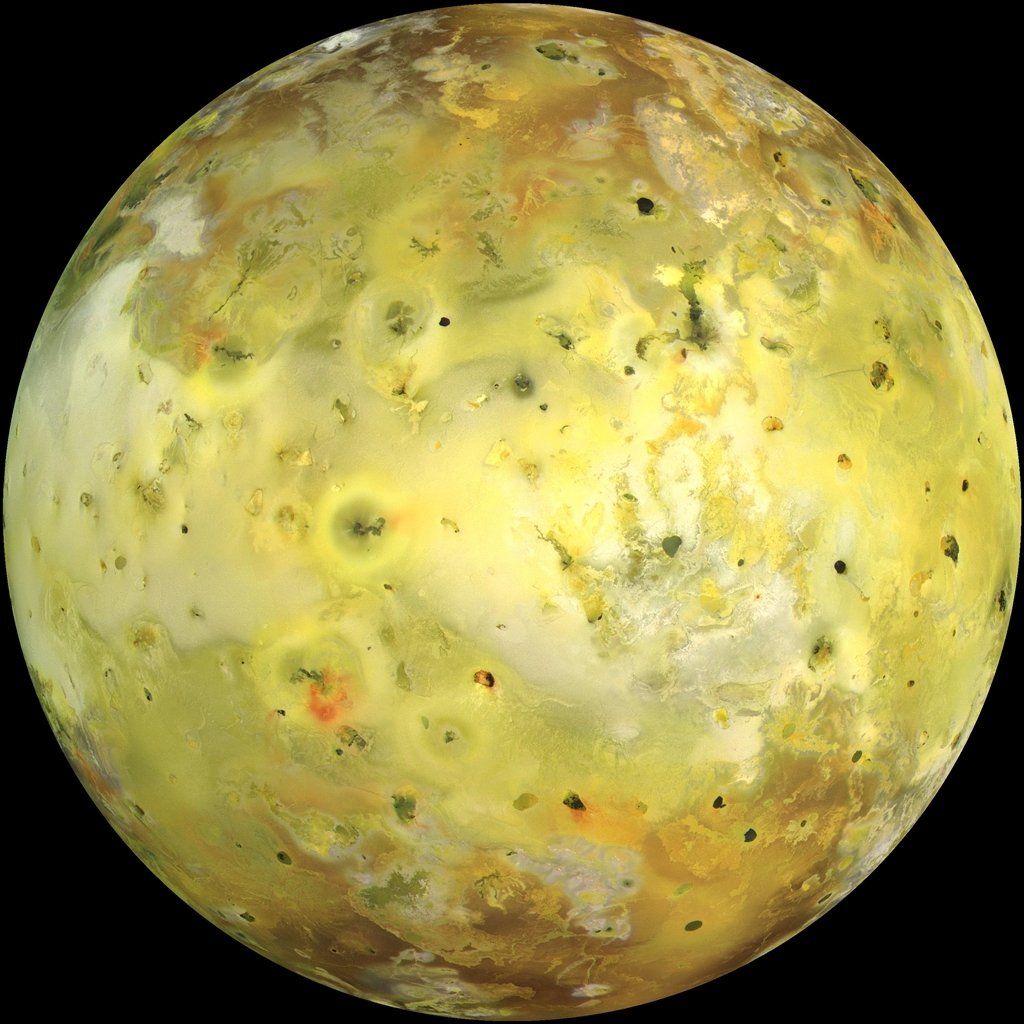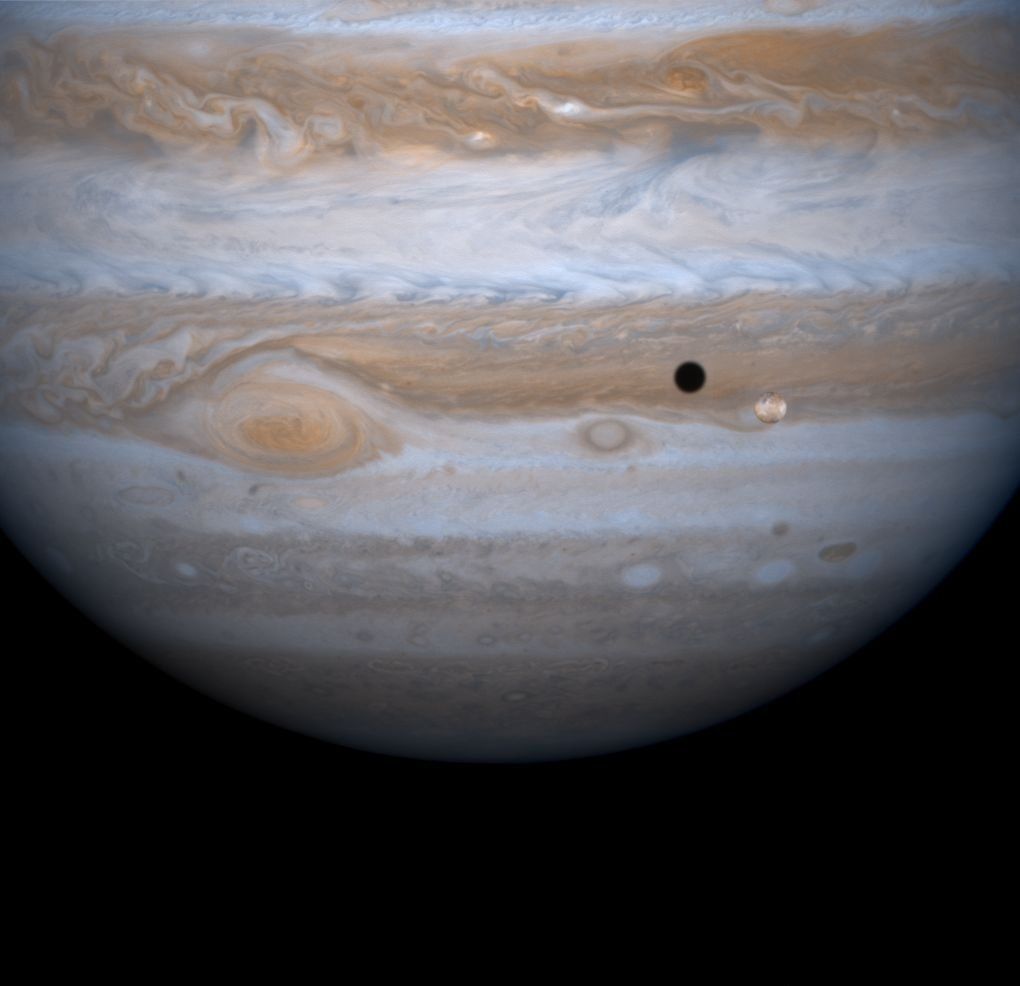This web page is created within BALTICS project funded from the European Union’s Horizon2020 Research and Innovation Programme under grant agreement No.692257.
Jo
Of all the moons discovered by Galileo, Io, which is about 3,643 km in diameter, orbits closest to Jupiter at a distance of about 422,000 km. Io is only slightly larger than Earth’s Moon.
Like the other Galilean moons, Io rotates synchronously with its orbital period, so one side of the moon always faces the planet. Its orbit is highly elliptical because the larger moons, Europa and Ganymede, affect its distance from Jupiter.
Io is in 2:1 resonance with Europa and 4:1 resonance with Ganymede. This means that Io orbits Jupiter twice while Europa orbits once, but in the case of Ganymede, Io manages to orbit four times while Ganymede orbits Jupiter once. Io takes 42.5 hours to complete one orbit around Jupiter. The moon is subjected to tremendous tidal forces, which cause Io’s surface to bulge up and down by as much as 100 metres.
The constant tidal forces generate a tremendous amount of heat within Io. Therefore, most of the crustal rocks, which are about 50 km below the surface, are in a molten state and form a magma ocean about 50 km thick. Io is the most volcanically active celestial body in the Solar System, with clouds of gases ejected by volcanic eruptions as high as 500 km. There are more than 400 active volcanoes on Io.
The constant eruptions are constantly renewing the moon’s surface, so it is free of craters formed by collisions.
Io’s surface temperature is about -160oC. Some of the gases ejected by the eruptions freeze and turn to frost on the moon’s surface, turning it white or grey. Precipitates of pure sulphur give Io’s surface a yellowish tone. Intense radiation causes the sulphur to turn maroon, as seen in the polar regions.
Io is mainly composed of silicate rock. The moon probably contains a molten iron core. It is possible that the planet was radiating a lot of heat when Jupiter formed. Therefore, Io has almost no water, unlike the other three Galilean moons.
Volcanic eruptions eject large amounts of sulphur dioxide gas, which is the main component of Io’s rarified atmosphere. As Jupiter rotates on its axis, its magnetic field rotates with it, stripping off about 1,000 kg of Io’s material every second, which becomes ionised and forms a cloud of intense radiation around Io’s orbit. Some of the charged particles along Jupiter’s magnetic field lines enter the giant planet’s atmosphere and create auroras.
This moon was discovered by Galileo Galilei, who first observed Jupiter and its largest moons in early January 1610. Initially, the moon did not have a name. For several centuries, the numbering system introduced by Galileo was used, with Io being the Jupiter I. It was not until the 1800s that the moons were given the names used in ancient Greek and ancient Roman mythology and associated with Jupiter or Zeus. The names given to the surface objects on Io, on the other hand, are related to the volcano, fire, solar and lightning deities in the myths of various nations, as well as to the “Inferno” of Dante’s “Divine Comedy”.






















